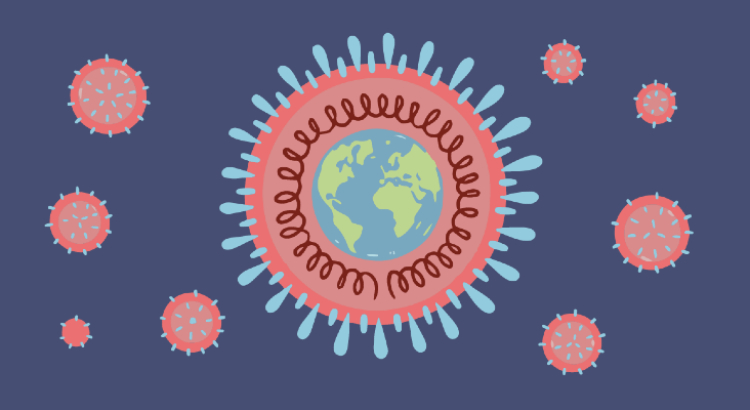Pressure is mounting on public health authorities to take the role of buildings in coronavirus spread more seriously.
In a formal letter released today by the journal Clinical Infectious Diseases, more than 200 scientists and engineers are calling on the World Health Organization and other agencies to recognize and mitigate airborne transmission of COVID-19.
Titled “It is Time to Address Airborne Transmission of Covid-19,” the letter begins with a direct plea: “We appeal to the medical community and to the relevant national and international bodies to recognize the potential for airborne spread of COVID-19.”
Public pressure from prominent professionals could carry repercussions for the way that indoor environments are managed just as employers the world over seek to re-open commercial buildings in the midst of the pandemic. It also could have an influence on future design decisions.
“We are concerned that the lack of recognition of the risk of airborne transmission of COVID-19 and the lack of clear recommendations on the control measures against the airborne virus will have significant consequences: people may think that they are fully protected by adhering to the current recommendations, but in fact, additional airborne interventions are needed for further reduction of infection risk,” it says. (While the letter hasn’t been formally published, the journal made the manuscript available today on its website.)
“Airborne transmission” refers to instances in which the disease infects people by being carried on tiny aerosols, or “microparticles,” that can float through the air for significant distances — as the letter puts is “tens of meters.” Aerosols are distinguished from larger “droplets” that tend to be expelled by coughs and sneezes; the aerosols or microdroplets are much smaller and typically are expelled by talking or even from normal breathes.
Adherents to the theory that this could be a significant route for COVID-19’s spread point to multiple documented cases in which the coronavirus apparently traveled through buildings by riding on aerosols. The lack of wind and humidity inside buildings is believed to allow such aerosols to stay suspended indoors for longer periods. In some cases, infected aerosols also appear to have been carried through mechanical ducts inside buildings.
So scientists and engineers have been suggesting that building operators open windows and doors, and that they also consider such equipment adjustments as increased mechanical ventilation, humidification and better air filters. From the letter:
The current guidance from numerous international and national bodies focuses on hand washing, maintaining social distancing, and droplet precautions. Most public health organizations, including the World Health Organization (WHO) do not recognize airborne transmission except for aerosol-generating procedures performed in healthcare settings. Hand washing and social distancing are appropriate, but in our view, insufficient to provide protection from virus-carrying respiratory microdroplets released into the air by infected people. This problem is especially acute in indoor or enclosed environments, particularly those that are crowded and have inadequate ventilation relative to the number of occupants and extended exposure periods ….
Living Building Chronicle wrote last month about the push to put more of an emphasis in the fight against COVID-19 on building systems. In April, an open letter to the WHO from 36 leading scientists raised similar concerns. Representatives from the international organization met with one of the writers of the earlier letter but didn’t alter its advice, according to the New York Times.
Scientists acknowledge that WHO is in a difficult spot when it comes to offering advice that could affect COVID-19 strategies in a diverse world. Poor countries may not be able to afford changes to mechanical systems in their buildings, for example, and airborne spread inside buildings could wildly differ according to the climate, or by whether it’s the heating or cooling season.
While major media organizations are focusing on the pressure being placed on WHO, the letter’s appeal to “national bodies” could have a more direct impact in the United States. In last month’s article, Living Building Chronicle documented a similar focus on hand washing and social distancing — as opposed to the purported airborne threat — by the U.S. Centers for Disease Control and Prevention, as well as among state health agencies.
Among the 239 signatories of this week’s letter are mechanical engineer William Bahnfleth, an architectural engineering professor at Penn State who chairs the ASHRAE Epidemic Task Force, and Harvard Professor Joseph Allen, who’s gained national attention as co-author of the book Healthy Buildings. Its principal authors are Lidia Morawska, director of the International Laboratory for Air Quality and Health at the Queensland University of Technology in Australia, and Donald Milton, director of the Institute for Applied Environmental Health at the University of Maryland,
In a statement released today by her university, Morawska said: “Expertise in many science and engineering areas enables us to understand the characteristics and mechanisms behind the generation of respiratory microdroplets, how viruses survive in these microdroplets and how airflow patterns carry microdroplets in buildings. The measures that need to be taken to mitigate airborne transmission include: Provide sufficient and effective ventilation (supply clean outdoor air, minimize recirculating air) particularly in public buildings, workplace environments, schools, hospitals, and aged care homes; supplement general ventilation with airborne infection controls such as local exhaust, high efficiency air filtration, and germicidal ultraviolet lights; [and] Avoid overcrowding, particularly in public transport and public buildings.”
IMAGE AT TOP: Courtesy Philippa Steinberg for International Genomics Instittute..


